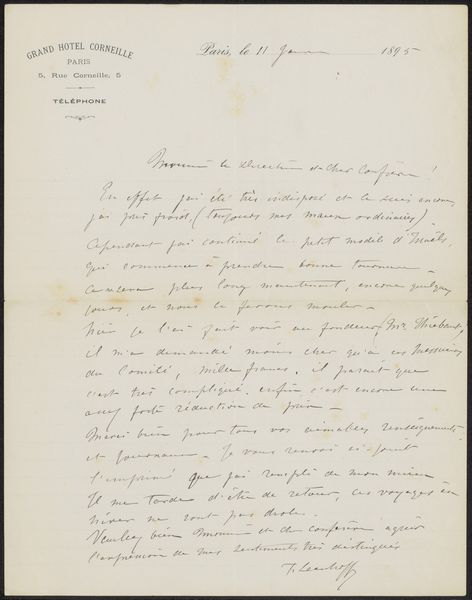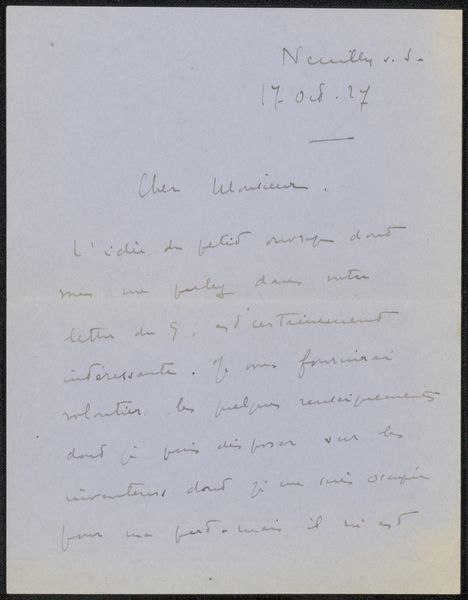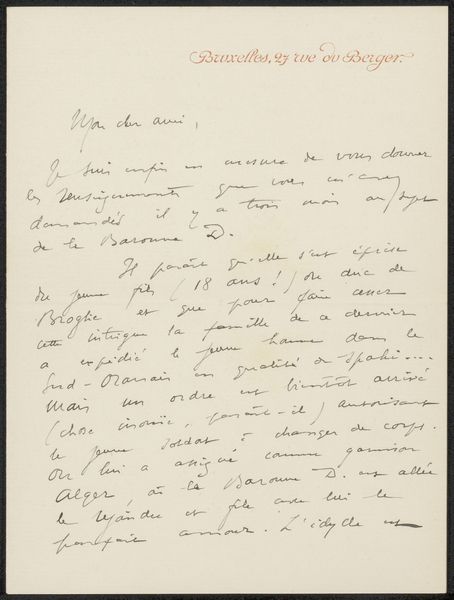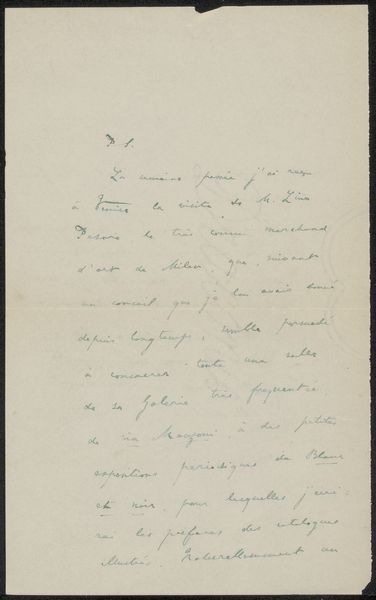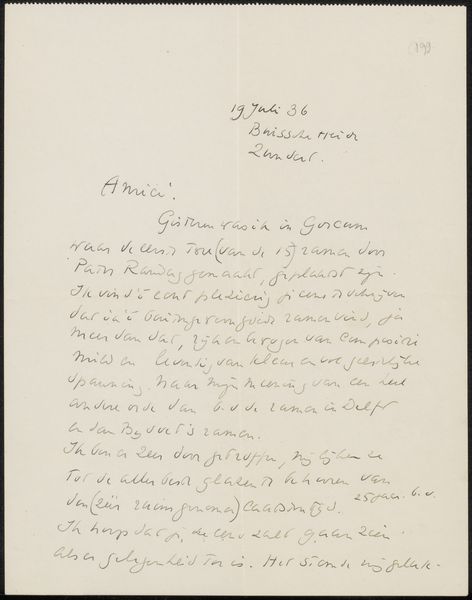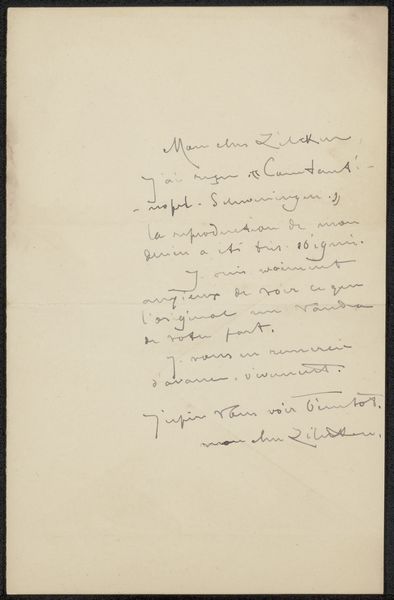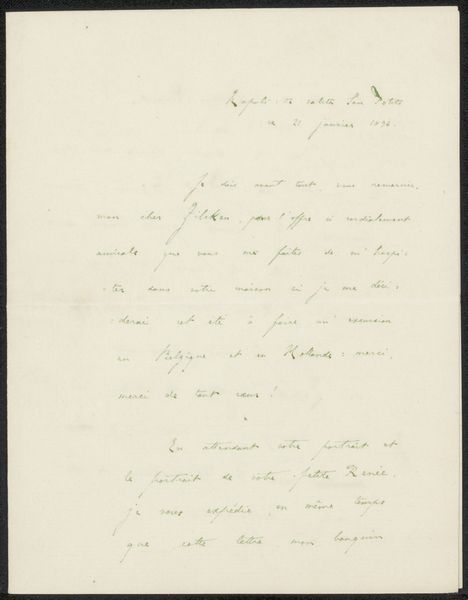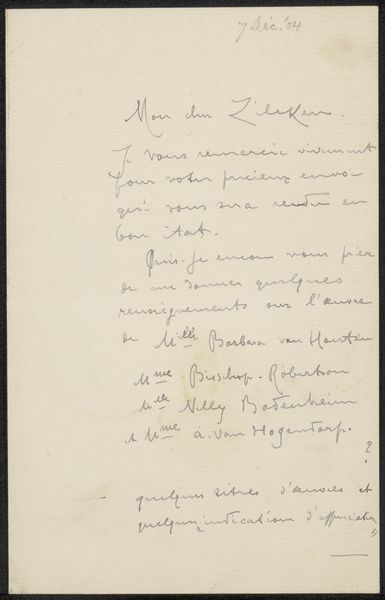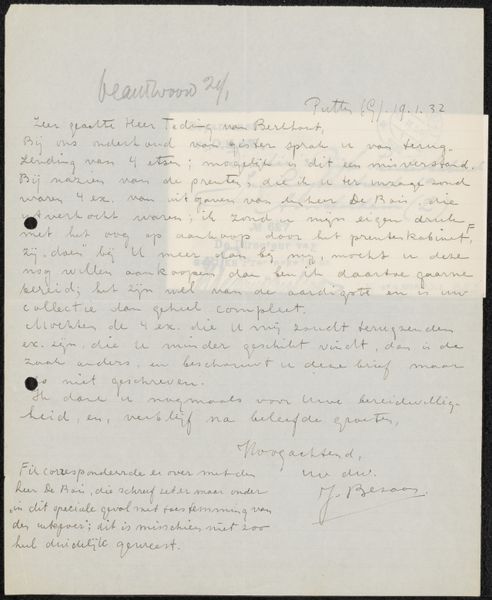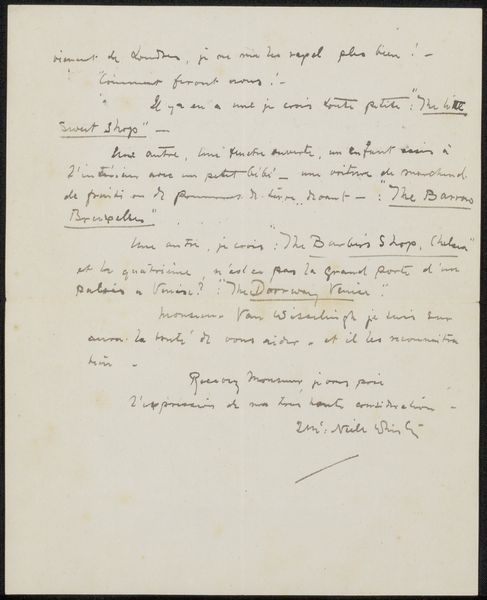
drawing, mixed-media, textile, paper, ink
#
drawing
#
mixed-media
#
textile
#
paper
#
ink
#
calligraphy
Copyright: Rijks Museum: Open Domain
Curator: We're looking at "Brief aan Philip Zilcken," potentially from 1927, by Simonne Ratel. It’s a mixed-media piece, combining drawing, ink, and textile elements on paper, with an emphasis on calligraphy. It’s really an interesting assembly. Editor: It does evoke a sense of intimacy, doesn’t it? The slightly faded ink, the way the fibers of the paper show through…it feels fragile, almost like a secret whispered across time. Curator: Absolutely. Ratel was clearly engaging with the very act of communication here. The handwritten letter format holds its own symbolism, carrying cultural memory, when so much interaction is now digital. You see the marks and flourishes specific to Ratel herself. Editor: But let's not romanticize this too much, the "intimacy" it conveys is really limited. The formal tone and almost bureaucratic content – addresses and administrative details, seemingly seeking information – reveals more about the practical realities women artists faced. Who were the recipients, what networks did they negotiate? What type of opportunities did the recipient enable or prevent for her? Curator: You raise a vital point, that these works operate in complex social and historical currents. And I wonder, what does it mean when “feminine” traits or tropes like handwriting, associated so easily with women’s historical work, becomes a material and stylistic element? Are we falling into expected territory here? Editor: Exactly! We need to critically examine what is conveyed in this context, which is likely bound with cultural and social constraints rather than simply assuming the unburdened expression of personhood through handwriting or “feminine” craft, like textiles. The contrast between the artistry of the lettering and the mundanity of the text is striking, to be sure. Curator: Thinking about this as a form of cultural continuity opens so many questions. Why were these forms seen as safe or practical modes for creative work, and who gets to determine those designations over time? The symbols become almost unstable through time. Editor: In the end, viewing this work outside a broader sociopolitical context feels hollow. What can it tell us about these dynamics and hidden realities? Curator: It encourages us to read beyond the surface and explore the many complex layers behind something seemingly so simple as a letter.
Comments
No comments
Be the first to comment and join the conversation on the ultimate creative platform.
